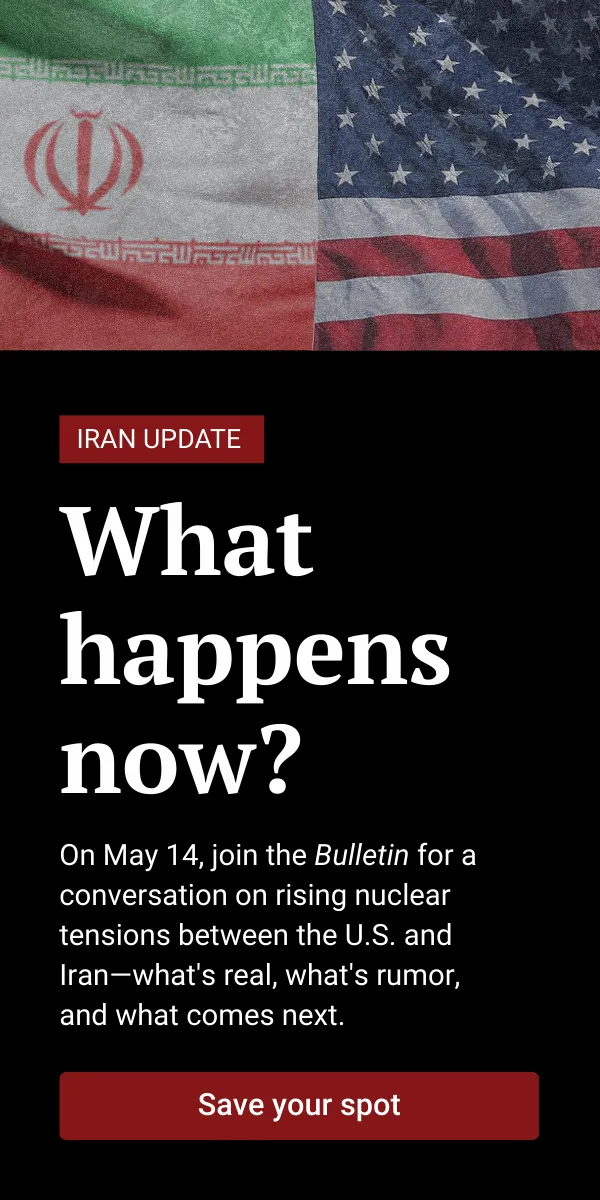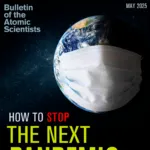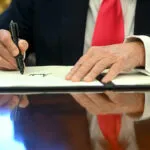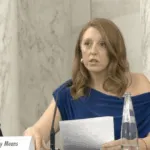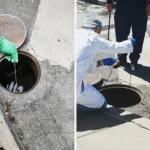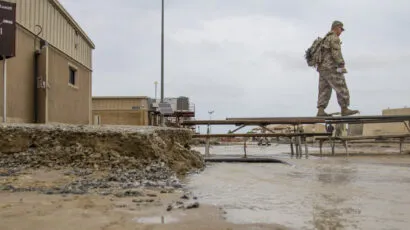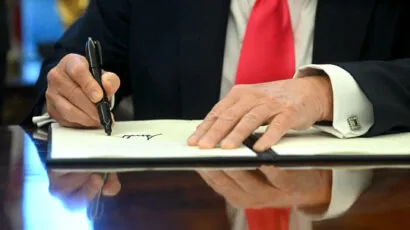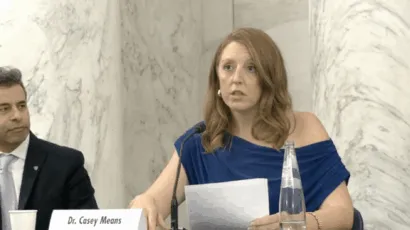Lessons unlearned
By Charles P. Blair | July 22, 2013
When it comes to hostile states suspected of having weapons of mass destruction, examples of unwarranted and erroneous US allegations are not hard to find. In 1981, for example, the United States falsely accusing the Soviet Union and Vietnam of using so-called “Yellow Rain,” a weaponized and deadly mycotoxin derived from fungi, against opposing forces in Laos, Cambodia, and Afghanistan. Subsequent independent scientific investigations demonstrated the agent in question was bee feces.
Fifteen years ago, inadequate chemical analysis led the United States to launch a cruise-missile attack that destroyed the al-Shifa pharmaceutical factory in Khartoum, Sudan. Due to ill-informed understandings of the significance of soil samples indicating the presence of O-ethyl methylphosphonothioic acid (often known by its acronym, EMPTA), the plant was mistakenly believed to be producing the chemical nerve agent VX for Al Qaeda. A 1998 report by a Monterey Institute of International Studies researcher conservatively concludes that it was possible “a small quantity of a VX precursor chemical was produced or stored in Shifa or transported through or near it. However, the balance of available evidence indicates that the facility probably had no role whatsoever in [chemical weapons] development.”
More recently and famously, America’s leaders neglected to follow established standards of scientific analysis — and propagated outright falsehood — while tragically taking American forces into Iraq in a disastrous quest to disarm Saddam Hussein of his country’s chimerical chemical weapons program, fictitious mobile biological weapons platforms, and illusory nuclear weapons potential.
Syria is the first WMD-armed country (but certainly will not be the last) to descend into civil war. How the United States — and the world — handles Syria will unmistakably affect future dealings in similar situations. But to get the WMD assessment in Syria right, US and world leaders will have to break free of the past habits of obfuscation, unsound scientific forensics, and the withholding of conflicting data. Unfortunately, as of now, the United States appears to be reprising its history of opaque and questionable WMD decision-making by claiming chemical weapons use on the basis of insufficient evidence.
Redrawing the red line. On June 13, the Obama administration determined that Syria had used chemical weapons against its own people and crossed the so-called chemical weapons red line, a declaration that allows for direct US military support of opposition forces. But this determination is impossible to verify through open sources and regrettably shows the United States to be in danger of repeating past WMD mistakes.
Ironically, from the beginning of the Syrian uprising in March 2011 until very recently, informed concerns about Syria’s chemical arsenal have rightly focused more on the nexus of chemical weapons with terrorists and other non-state actors than on the Assad regime’s chemical proclivities. As I have argued since early 2012, terrorist groups, especially violent Islamists, have more incentive to conduct large-scale chemical weapons attacks than does the Assad regime. The Syrian leadership effectively and ruthlessly neutralizes perceived enemies easily enough without chemical weapons. In a war that has killed upwards of 90,000 people since 2011, less than 100 deaths can be potentially attributed to poisons — including several fatalities of soldiers loyal to the Assad regime in the March 19, 2013 attack at Khan al-Asal. Such realities notwithstanding, since August 20, 2012, the US government has issued eight red-line warnings to the Syrian government, saying use of chemical weapons would result in American intervention. Although the precise text of the warnings varied, the red line was defined by four broad triggering mechanisms:
- The use or movement of sizable quantities of chemical and, as specified on occasion, biological weapons.
- The use of chemical weapons “against the Syrian people.”
- The transfer of chemical and biological weapons.
- The transfer of chemical weapons to terrorists.
The most recent of the eight warnings was contained in a letter the White House sent to Michigan Sen. Carl Levin on April 25, 2013. By this time, the governments of France, the United Kingdom, and Israel had levied three separate accusations of definitive chemical weapons use against the Assad regime. The April communiqué focused on the accusations and established why, in the White House’s view, the red line had not been crossed.
In hindsight, the most salient features of the letter describe scientific and methodological inadequacies that precluded the US government from agreeing with its allies’ claims that the Assad regime had used chemical weapons against the Syrian people. The White House communiqué stated that the US intelligence community “does assess with varying degrees of confidence that the Syrian regime has used chemical weapons on a small scale in Syria, specifically the chemical agent sarin.” Although it acknowledged that the intelligence communities’ assessment was partly based on physiological samples, the White House also asserted that “intelligence assessments alone are not sufficient — only credible and corroborated facts that provide us with some degree of certainty will guide our decision-making…” Consequently, the Obama administration called for a “comprehensive United Nations investigation that can credibly evaluate the evidence and establish what took place.”
The letter acknowledged that credible facts were hard to come by in part because of gaps in evidence: “[T]he chain of custody is not clear, so we cannot confirm how the exposure occurred and under what conditions.” As Matthew Meselson, co-director of the Harvard Sussex Program on Chemical and Biological Weapons, explains: “High confidence requires that the chain of custody and the treatment of samples before they reach the participating analytical laboratories be accurately known and without possibility of tampering, contamination, or influences that might interfere with subsequent chemical analysis.”
Yet less than two months later, on June 13, the Obama administration announced “high confidence” that the Assad regime had used chemical weapons. New evidence had emerged since the April 25 warning — recent physiological samples and unspecified intelligence intercepts reportedly of chemical weapon-related communications between Syrian officials. But the initial treatment and chain of custody of the new samples was devoid of credible scientific protocol. Similarly, intelligence intercepts are often misinterpreted — sometimes with tragic consequences.
Repeating the April 25th warning “that chemical weapons have been used on a small scale by the Assad regime in Syria,” the White House broke from its previous criteria for US intervention in Syria. The administration simply asserted that after “a deliberative review,” the US intelligence community now had “high confidence” that the Syrian government had used chemical weapons on a small scale multiple times, and that this intelligence assessment meant the Assad regime had crossed the red line. This pronouncement led to prompt expansion of aid to include direct support to Syrian opposition, operating under the banner of the Supreme Military Command. Thus, the United States prepared for its seventh military involvement in a Muslim country since 2001.
The evidence not offered. Although virtually unexplored by the US media, several puzzling issues arise from the US government’s about-face on the Syrian chemical weapons red line. The obvious issue involves the initial handling and the chain of custody of the physiological samples used by French scientists to confirm presence of isopropyl methylphosphonic acid (IMPA), a chemical marker of sarin. Earlier chains of custody were highlighted in the White House’s April 25 letter as “not clear, so we cannot confirm how the exposure occurred and under what conditions.” Even with the subsequent French samples that reportedly validated the existence of IMPA, original treatment of samples and their chain of custody remains unresolved in the public record. Then again, the April letter observed that “intelligence assessments alone are not sufficient — only credible and corroborated facts that provide us with some degree of certainty will guide our decision-making.” Yet the Obama administration’s June 13 declaration that the Syrian government had used chemical weapons rested almost entirely on an intelligence assessment for which little new evidence was adduced in public. Most striking was the declaration’s assertion that confirmation “can be made that an individual was exposed to sarin” — even though no evidence exists about “how or where the individuals were exposed or who was responsible for the dissemination.”
Regardless of its perceived necessity, the growing US military involvement in Syria — predicated on the announcement of the Syrian government’s crossing of the chemical weapons red line — has not been well justified to the public. Use of significant quantities of chemical warfare agents has never been established or claimed by the White House — even though its first warning and implicit message in its final warning clearly establish that significant use is a criterion for red-line breach. No incontrovertible evidence has been publicly demonstrated despite US emphasis on the need to “establish credible and corroborated facts.”
By late April 2013, the Syrian regime and, possibly, opposition forces had arguably engaged in a limited number of small-scale chemical attacks since the first red line warning in February 2012. Total chemical-related deaths during that 14-month time frame could have reached 100, with the possible inclusion of 16 Syrian soldiers loyal to the regime. Yet the publicly available evidence — including the White House’s April 25 letter and the seven earlier American warnings — all suggest that the Assad regime is uncommitted to widespread use. According to one defector, “The intention was to incapacitate rebels and force them out of strategic areas, while keeping deaths among their ranks limited.”
Still, the evidence is uncertain. The chain of custody for the samples of soil, blood, urine and hair that supposedly confirm chemical weapons use remains opaque. And without knowing for certain where samples came from and who has controlled them, the samples are not, in a scientific or legal sense, evidence of anything. As former UN weapons inspector David Kay warns, “You’d be an idiot if you didn’t approach this thing with a bit of caution.” Renowned biological and chemical warfare authority Julian Perry Robinson elaborates: “For the time being, onlookers can reasonably believe the reporting only if they are willing to trust unsubstantiated assertion or incomplete evidence, or to disregard the history of chemical warfare. That history is full of false [chemical weapons] allegations and of instances in which people who should have known better were led astray by such tales — either through ignorance or through deception or through self-delusion.”
It appears the White House believes that onlookers will trust inadequate evidence and disregard prior intelligence failures that have precipitated disastrous outcomes. The Syrian opposition has a clear incentive to manipulate evidence so it suggests that the Assad regime has crossed the red line. As Robinson notes, such manipulation would not be particularly unusual, as shown, for just one example, in the months before the United States invaded Iraq in 2003, when members of the opposition Iraqi National Congress provided US intelligence services with false information suggesting that Saddam Hussein’s government had biological and nuclear weapons programs.
Certainly there are strong arguments to be made for US military involvement in Syria — not the least of which is to ensure that any successive Syrian government is not run by violent Islamists, currently the most effective opposition forces in Syria. The manner in which the Obama administration has justified a military component to its handling of the Syrian dilemma is, however, highly troubling. Inconsistencies and vague wording have plagued American red-line warnings. The central question — what would constitute a violation of the chemical weapons taboo? — remains unanswered. Moreover, the administration has not heeded lessons from past WMD disasters. It has failed to insist on the scientific methods and legal standards necessary to confirm the use of chemical weapons and, in the process, it is setting a dangerous precedent. Over time, other WMD-armed states — including, for example, North Korea and several countries in the Middle East — may well become embroiled in civil strife. If the red line is not drawn clearly in Syria, how can the United States expect other governments and other insurgencies to refrain from crossing it?
Together, we make the world safer.
The Bulletin elevates expert voices above the noise. But as an independent nonprofit organization, our operations depend on the support of readers like you. Help us continue to deliver quality journalism that holds leaders accountable. Your support of our work at any level is important. In return, we promise our coverage will be understandable, influential, vigilant, solution-oriented, and fair-minded. Together we can make a difference.
Topics: Biosecurity, Columnists, Special Topics

